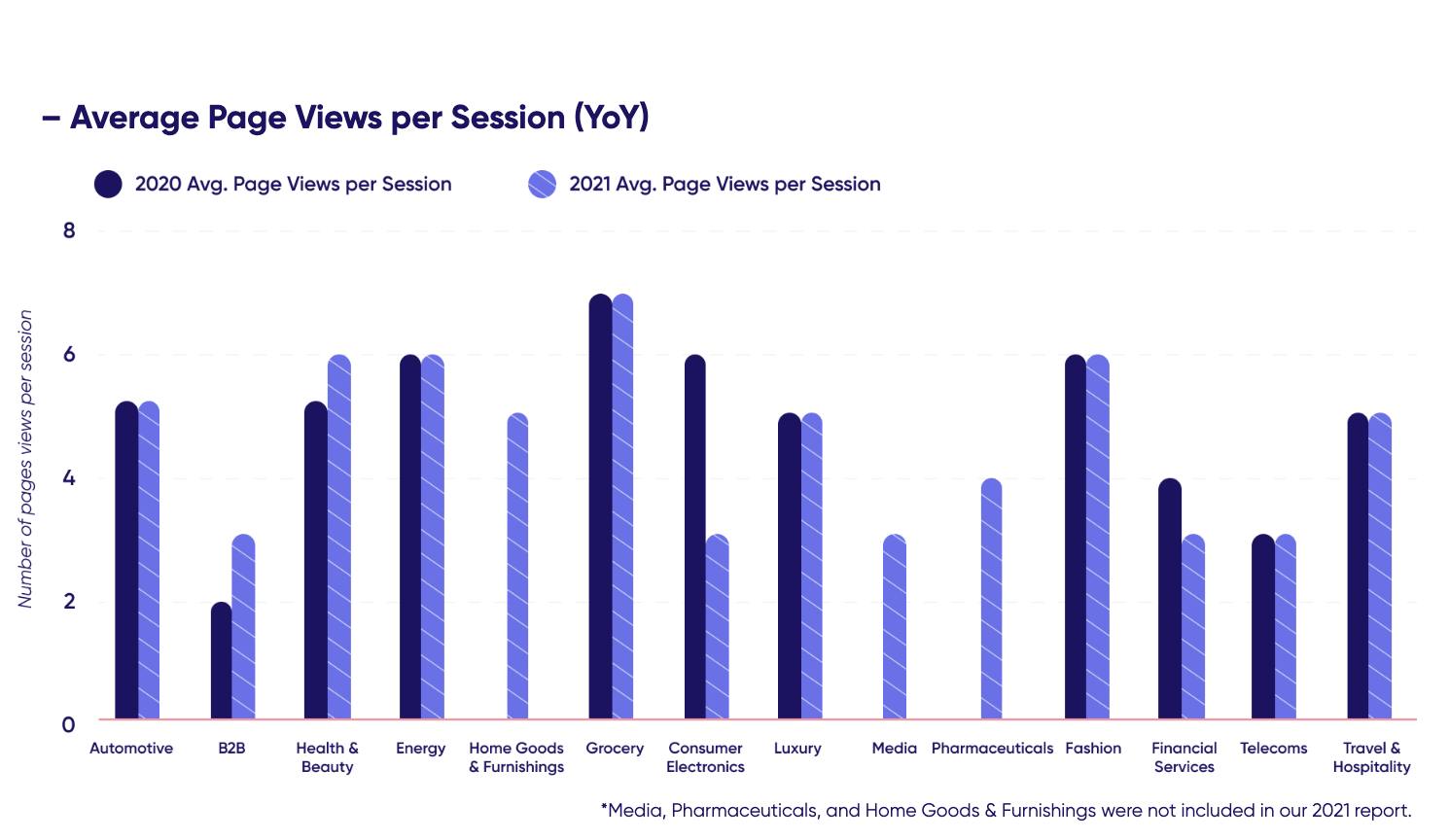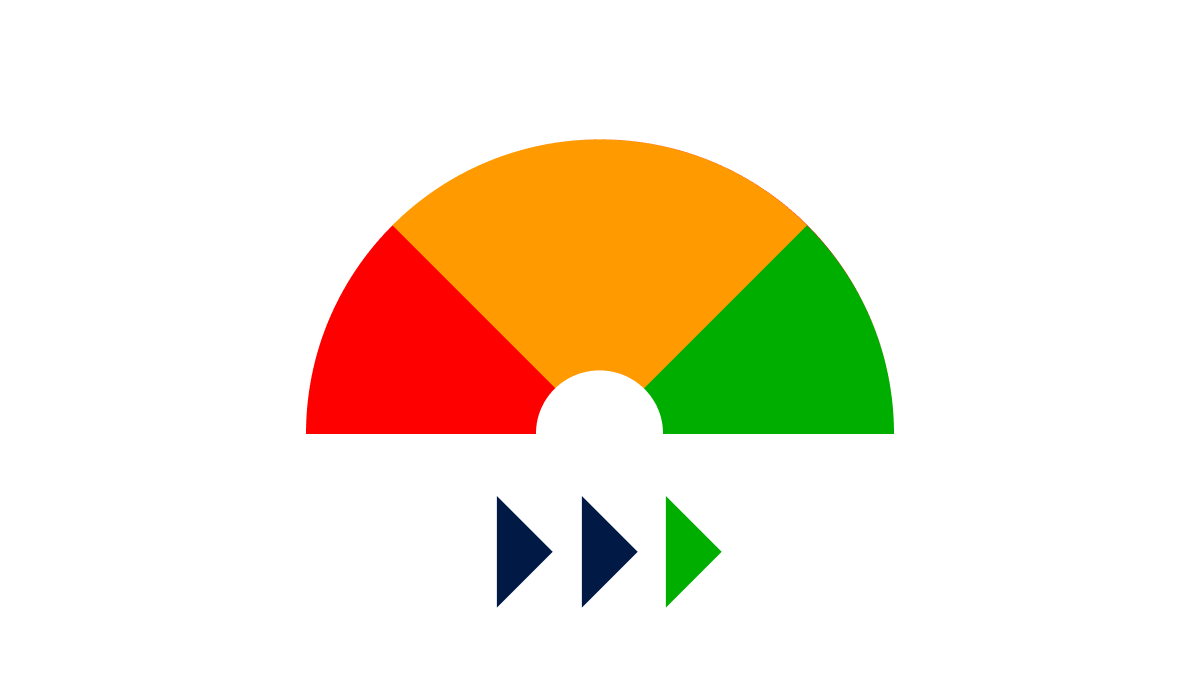When was the last time you took a step back to review your content marketing strategy and ask yourself, does this stand out? Is my strategy doing the right thing?
You could hold quarterly planning sessions to identify new ideas to fill your content calendar and set objectives. Then once the content is published, you pray it will generate engagement. Then, like clockwork, you move on to the next piece of content on the list.
So far, so good, right? Well, not exactly.
Suppose you don’t take the time to evaluate your content marketing performance. In that case, you’re missing insights that will inform you of your content performance and help you optimize even after distribution.
In this article, we’ll unpack the six most critical strategic approaches you should use to evaluate your content marketing performance.
These strategies will help you confidently answer these burning questions your stakeholders are no doubt always asking:
- Was the effort required in producing your marketing collateral worth the investment?
- How many leads generated from your white papers or eBooks go on to become customers?
- By how much did the revenue increase?
- How do you know you can attribute this increase to your marketing efforts?
To start off, let’s look at the bright side. Here’s how to recognize when you’re doing things right and your content is performing well.
How to know your content is performing well
First, it’s worth understanding the positive signs that indicate that your content is performing well rather than always looking for the negative. This will help you quickly identify high-performing content experiences so that you can be agile in optimizing your content calendar towards high-performing content formats and themes that resonate with your target audience.
Here are some key indicators to help you evaluate the performance of your blog:
- Traffic growth
- High user engagement
- Higher conversion rates
- Position shifts in keyword rankings
- Positive comments and feedback on social platforms
- Goal achievement (# of leads, subscriptions, contact submissions, or sales generated)
Signs your content marketing efforts are dwindling
Not so positively; it’s essential to be aware of the warning signs that show your content isn’t performing how you’d like it to. Some key indicators to watch out for include:
- Low traffic
- High bounce rate
- Low user engagement
- Declining search engine rankings
- Lack of conversions
- Negative feedback or complaints
- Stagnant or declining audience growth
- Poor content distribution
- Lack of goal achievement
Now, if you do see some of these signs, this doesn’t mean you should abandon your efforts entirely. It might mean that your content market strategy may need some refining and optimization.
The key here is to measure your content’s effectiveness using these indicators frequently. Depending on the type of content you are evaluating will determine how quickly you can measure the impact of your content’s performance. For example, a blog post may take up to two months for Google to properly index your article before you can accurately evaluate its impact. Conversely, the performance of a newsletter or white paper you send to various stakeholders can be measured much more quickly - usually within a week of distribution.
Top Tip: How to distribute your whitepaper.
If you have a process embedded for reviewing and optimizing your strategy, chances are you’ll continuously work towards improving your content marketing strategy and efforts.
So without further ado, here are the six most important KPIs to measure your content marketing success.
Six most important metrics to measure content marketing performance
1. Engagement metrics
Bounce rate
Bounce rate measures the percentage of visitors who navigate away from a website after viewing only one page, without interacting with any other pages or taking additional actions. In other words, it represents the number of single-page visits compared to the total number of visits to a website.
Bounce rate is a powerful indicator of content performance because it reflects user engagement and content relevance, impacting organic ranking and conversions, and is a crucial metric for search engines to measure overall user experience.
According to siegemedia, a reasonable bounce rate is under or around 50%, depending on the industry. A ‘good’ bounce rate for a blog is 70%, with an average of 80%.
That being said, it's important to note that while a high bounce rate might be a cause for concern, it's not always negative, especially for single-page websites or specific types of content, like blog posts or news articles, where users might find all the information they need on a single page.
How to reduce your bounce rate
The first thing to do to reduce your bounce rate is to focus on providing high-quality and relevant content that meets your target audience’s expectations. Once you have that in place, other actions for reducing bounce rate are improving your content’s readability, optimizing page load time, and ensuring mobile responsiveness for a seamless user experience.
On top of that, make sure you use eye-catching images and videos (without impacting page load speed), implement intuitive navigation, and incorporate clear, actionable call-to-action buttons to encourage further exploration.
Average time on page
Average time on page measures the average time users spend on a specific webpage during a single session on a website. It calculates the total time spent by all visitors on that page and then divides it by the total number of visitors, providing an average time value.
This metric helps assess how engaging and compelling the content on a particular page is and how effectively it retains visitors' attention. A higher average time on a page generally indicates that visitors find the content valuable and engage more.
The average time on the page indicates content performance because it reflects content engagement, relevance, and user experience.
According to Contentsquare, the average time per page across multiple industries is around 55 seconds. However, this can vary widely depending on the industry, website, and content.

(Source: Contentsquare)
How to increase average time on page
To increase the average time on page, again, focusing on creating high-quality, valuable, and engaging content that meets the needs of your target audience is a great place to start.
On top of that, make sure the design and layout of your page are created with your ideal user in mind. For easy skimming and navigation, organize content with clear headings, subheadings, and bullet points.
Grab readers' attention with headlines and introductions to hook visitors and encourage them to stay longer. Leverage multimedia elements like images, videos, and infographics to enhance content appeal and comprehension.
Engagement rate
Engagement rate provides valuable insights into how well your audience interacts and connects with your content. Unlike simple metrics like page views or clicks, engagement rate goes beyond mere traffic numbers and focuses on the level of user involvement and interest in your content.
Measuring engagement rate involves analyzing various metrics that indicate how users interact with your content. The specific metrics you choose to measure will depend on the type of content you have and your objectives. In GA4, Engagement Rate is a calculated metric representing the percentage of sessions with an engagement event.
The formula for Engagement Rate in GA4 is:
Engagement Rate = (Sessions with Engagement Events / Total Sessions) x 100
It’s important to note here that an engagement event can be triggered by a button click, conversion completion, or a session that exceeds 10 seconds.
Engagement rate can also mean how your content performs on various distribution channels. For example:
- On average, engagement rates typically range from 1% to 5% for social media platforms like Facebook, Instagram, or Twitter. This means that, on average, 1% to 5% of the total audience who saw the content engaged with it through likes, comments, shares, etc.
- Email marketing campaigns often have higher engagement rates, with open rates ranging from 15% to 25% and click-through rates ranging from 2% to 5%, depending on the industry.
- Websites' average engagement rates can vary even more, with some sources suggesting bounce rates ranging from 40% to 60% on average and average time on page ranging from 1 to 2 minutes.
How to increase the engagement rate
Like everything else, you should primarily focus on creating valuable content that resonates with your target audience to increase the engagement rate.
Then, think about how you consume content. A catchy introduction should capture readers' interest instantly, while your layout should be clear and easy to read.
Once you have that down, maintain engagement using visually appealing elements like images and videos. Like always, optimize your content for mobile devices. Maintain and encourage interaction with clear call-to-action buttons throughout.
Finally, regularly analyze data to refine your content strategy for better engagement.
2. Website traffic
Website traffic refers to the number of visitors or users who access your website. It’s a fundamental metric for content performance as it reflects your site's overall reach and popularity.
Higher website traffic suggests that your content and marketing efforts successfully drive visitors to your site. Low traffic indicates the need to improve your content strategy or promotion methods. According to Hubspot, the median website gets 20,000 unique visitors per month, while the average is over 300K.
Evaluating whether website traffic is good or bad depends on various factors, including your website's objectives, industry benchmarks, and content context. Generally, higher website traffic is desirable, especially if it aligns with your goals, such as lead generation, sales, or brand awareness.
However, the quality of traffic and its relevance to your content and goals are equally important. If your content attracts targeted visitors who engage with your site and take desired actions, it can be considered good traffic. On the other hand, if the traffic is irrelevant, not engaging, or results in high bounce rates, it may be considered poor traffic that needs optimization.
How to increase website traffic
We may sound like a broken record, but one recurring theme is prominent. Increase website traffic by creating high-quality, valuable, and shareable content that resonates with your target audience.
On top of that, optimize your content for search engines (SEO) to improve organic visibility. Utilize social media platforms and email marketing to promote your content to relevant audiences. If it makes sense, collaborate with influencers or other websites to reach new audiences.
Try using paid campaigns like Google Ads or social media ads to increase visibility and attract traffic.
Of course, monitor and analyze your website analytics to identify traffic sources and areas for improvement.
3. Conversion Rates
Conversion rate is a crucial metric measuring the percentage of website visitors who complete a desired action or goal, such as purchasing, signing up for a newsletter, or filling out a contact form.
It is a vital indicator of content performance as it directly reflects the effectiveness of your content in driving meaningful interactions and achieving your objectives.
Whether a conversion rate is good or bad depends on various factors, including industry benchmarks, your content's specific goal, and your website's context. A higher conversion rate is desirable because more visitors take the desired actions, typically leading to increased revenue or desired outcomes.
Below is an overview of the average conversion rate by traffic source benchmarks segmented by the eight traffic sources in Google Analytics. Read more about conversion rates here.
Setting realistic expectations based on your industry and the complexity of your conversion goals is essential. What might be considered a reasonable conversion rate for one industry could be challenging to achieve in another.
Consistently monitoring and optimizing your conversion rate is essential to improve content performance and maximize effectiveness.
How to increase your content conversion rate
To increase the conversion rate for your content, ensure your content aligns with your target audience's needs and pain points, driving them to take action. Optimize landing pages and calls to action to be clear, persuasive, and easy to follow.
Implement A/B testing to experiment with different content formats and designs to identify what resonates best with your audience. Use compelling visuals and persuasive language to capture visitors' attention and interest.
Streamline the conversion process by minimizing form fields and reducing friction in the user journey. To build trust and credibility, Provide social proof, such as customer testimonials or reviews.
By implementing these tactics, you can increase your content's conversion rate, driving more valuable actions and achieving your business goals.
4. Lead generation & nurturing
The performance of your content plays a significant role in generating leads and pipelines for your business. Put simply, high-performing content enhances the discoverability of your brand through organic search and will return higher conversion rates for customers reached via paid channels.
When using content marketing to generate more leads, it’s critical that you plan your funnel stages and define each piece of content's role in attracting new customers, nurturing interest in your product or service, and then capitalizing on your audience when they are ready to make a decision.
For example, your audience may not be ready to give up their personal information at the awareness stage as they have only just discovered your brand and are only just beginning to understand how you can solve their business problems. With this in mind, you should evaluate content performance with engagement metrics at this stage, not how many conversions have been delivered.
As your audience develops more trust in your brand as experts in a particular field, you can begin to introduce gated content so that your sales team can engage interested users with highly relevant content tailored to their pain points. Consider supporting your sales team via paid channels with marketing collateral segmented to their stage in the buyer’s journey that educates your target audience.
Discover: How to create content that converts for the B2B sales funnel.
When evaluating the success of your lead generation and nurturing efforts, it’s crucial that you have regular feedback loops in place with your sales team to determine the quality of leads generated by content marketing efforts.
Keep a close eye on your conversion rates through the funnel all the way down to becoming a customer. You might find that specific content offers have a higher conversion rate to purchase than others. Analyzing the path to conversion is a vital indicator of content performance as it directly reflects the effectiveness of your content in driving meaningful interactions and achieving your objectives.
5. Search engine rankings and organic traffic
There’s no single measure of content performance for your blogs, solutions, and website features sections than how well these pages rank for target keywords in various search engines.
Favorable or unfavorable changes in ranking positions will help guide your understanding of content performance over time. Significant changes to Google’s algorithm are now in place that put greater emphasis on rewarding high-quality content that is helpful to users rather than content that is weak in the information provided and written for the purpose of ranking well in search engines.
The more effective your content is in providing value to users will be instrumental in your efforts to attract larger volumes of organic traffic to your website.
Here are the most important metrics you should be looking at to measure organic content performance:
Keyword rankings
Identify the most important keywords relevant to your business and monitor changes over time.
Organic traffic
Use free tools like Google Analytics to track how much traffic each piece of content delivers over time. High-traffic pages will readily inform you which topics resonate most with your audience.
Search result clickthrough rate
Google search console can help you determine the clickthrough rate of your pages in search results. Low CTR may indicate that your meta titles and descriptions aren’t compelling enough for users to click on your website.
Backlinks and referral traffic
Backlinks and referral traffic are potent signals to Google that your content is valuable to your audience. If other websites find your information so compelling that they link to it indicates that your content is high performing and will reward you with domain authority.
How to increase your search engine rankings and organic traffic
No effective SEO strategy is complete without thorough attention to both on and off-page optimization, user experience, and consistent efforts to ensure your content is up-to-date and rewarding to users.
Here are some of the most important drivers of search engine optimization:
- Keyword research
- High-quality content
- On page optimization
- Site speed and mobile friendliness
- Backlink building
- Technical SEO
- User experience
Use insights from your analysis to regularly optimize underperforming content. Consistent monitoring of these metrics allows you to refine your content strategy and make informed decisions for future content creation and optimization efforts.
6. Return on Investment (ROI)
Most importantly, your content marketing performance should be evaluated on how each piece of content contributes to your business's bottom line. ROI can be measured by comparing the cost of content creation and promotion against the revenue generated from content touchpoints.
A well-structured attribution model will help you understand how your content contributes to the various stages of the customer journey. Once you can accurately attribute user engagement with specific pieces of content that resulted in revenue will give you insight into which assets were instrumental in pushing users through the path to purchase.
Ultimately you’ll be looking at the activity history of leads in your CRM to identify which assets are most valuable to you and your customers.
Discover: How to measure the ROI of your content marketing.
Summary
Remember, successful content marketing is a continuous journey of improvement, adaptation, and delivering value. Put yourself in your audience’s shoes, and create content that you would find valuable and engaging.
Remember, don’t be afraid to switch things up based on these insights to maximize the effectiveness of your content marketing efforts.
With a comprehensive understanding of your content's performance, you can elevate your marketing efforts, foster deeper connections with your audience, and ultimately achieve your business objectives.




